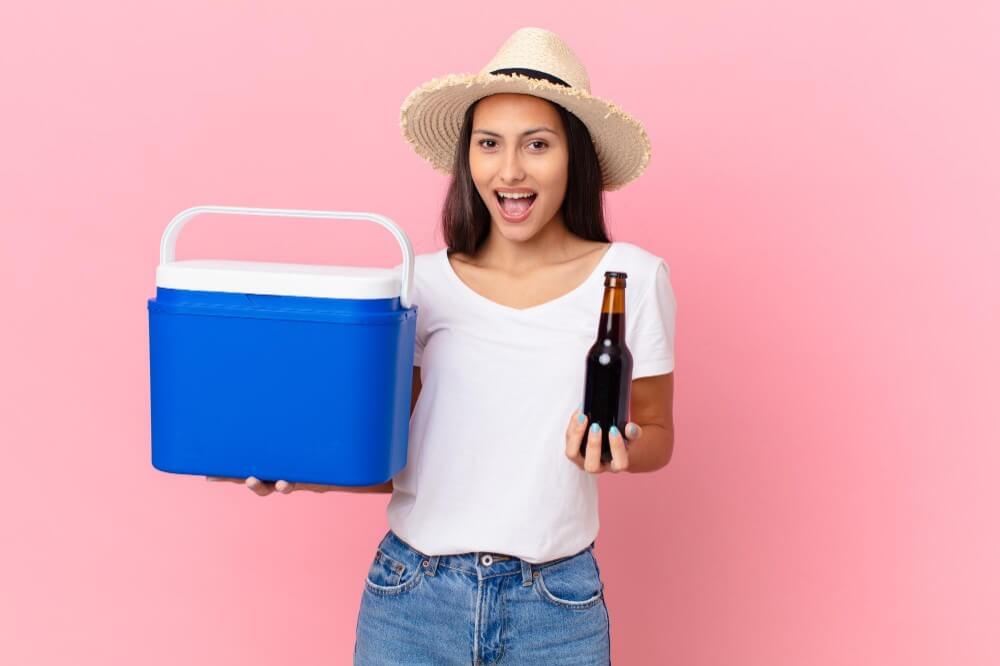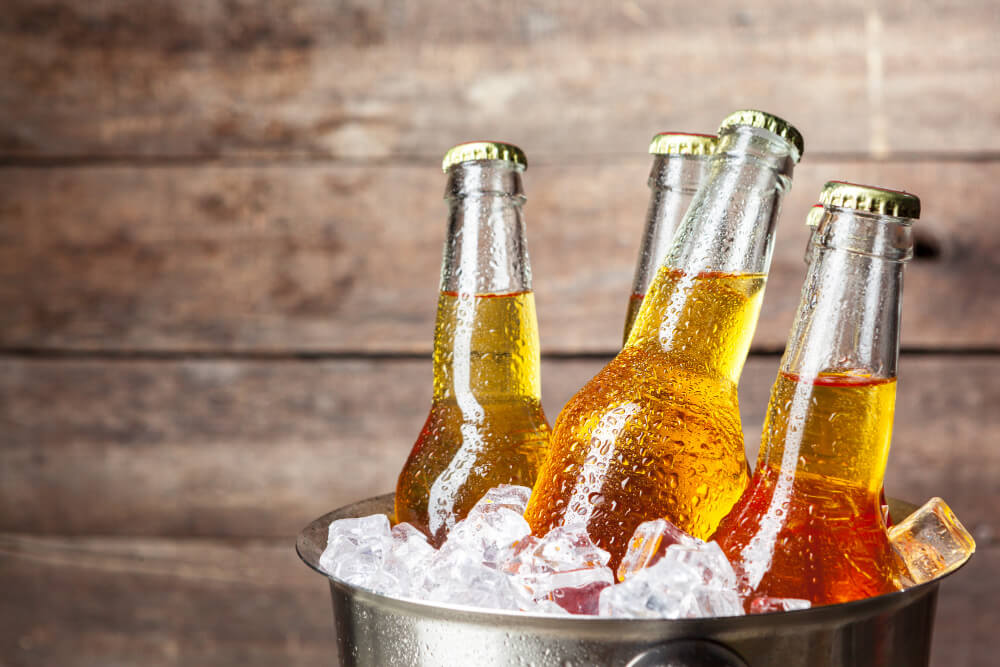What’s the Best Temp for a Beer Fridge?
It’s a question that many beer drinkers ask themselves and one that doesn’t have a definitive answer. The best temperature for storing and serving beer can vary depending on the type of beer, as well as your personal preferences. I’ve seen some recommendations to keep beer at 38F and others recommending 34F. So let’s analyze this question and determine the best temp for a beer fridge.
Read More: The Best Beer Fridge For Your Home: A Comprehensive Guide
Why Is Beer Kept in a Fridge?
Beer is kept in refrigerators because fermentation stops when it gets cold enough. As homebrewers know, beers ferment better with lower temperatures than at room or warm temperatures like you would find outside in summer.
What Happens to Beer When it Gets Cold?
When beer gets cold enough that fermentation stops, its quality decreases. This happens because the alcohol in beer is a byproduct of fermentation by yeast. So if you remove the sugar from the yeast and stop their main food supply (sugar), they will die off, and you won’t have any alcohol left – just water with stuff dissolved into it. So you can see how this would be bad for your beer.
What Temperatures Are Required for Fermentation to Stop?
Fermentation requires a lot more energy than any other process that occurs during brewing. Therefore, most fermentations require temperatures between 45F and 75F to ferment well. Some yeast will work at higher temperature ranges, but brewers usually want to ferment below 75F for flavor reasons. So if you’re trying to keep your fermentation cold enough to stop it, you have a range from 45F to 75F.
So What Should Be The Best Temp for a Beer Fridge?
The best temp for a beer fridge is the lowest one that starts fermentation! This is because getting the beer cold enough will give the yeast less energy, so they’ll quit working and die off. It’s also worth noting that at lower temperatures, beers take longer to ferment, which means more foam in your carboy/bucket and a longer wait until you can drink them…but with the benefits of no fuel alcohols.
Why Do People Keep Beer at 38F?
I understand why many people would want to keep their beer at 38F. If it’s as simple as just lowering the fridge, then this is the temp I’d recommend too! However, if you have enough room in your fridge for an additional compartment or you’re willing to dedicate a large chest freezer, going down to 34F won’t be that big of a deal, and your beers will benefit from it (fewer fuels).
If you use a chest freezer (see what they look like here), ensure it doesn’t get too cold on the top portion where the door closes. This is because warm air rises, and if there’s anything colder than 38F below it, then the warm air from the fridge could be cooling those things down. I’ve found that if you just put a blanket on top of the chest freezer to wall off this area, this works perfectly.
What About Kegging? Do You Need to Keep Beer in a Fridge?
I would recommend keeping kegged beer cold. Colder temperatures slow down diacetyl rest and conditioning times which can help improve clarity and reduce hangovers. Even though most people don’t like their beers too cold, I think even 38F or 45F is good enough for most beers – but it’s worth noting that some styles benefit from higher temperatures like 60F+. In these cases, you won’t be able to keep your kegs at 38F or below, but it’s probably worth keeping a chest freezer dedicated to these beers.
Bottle, Can, or Keg… how does the vessel dictate the temperature beer can be served?
A poured pint of beer doesn’t have to be 38F because the glass and the bar served will keep the temperature warm enough. However, for cask ales to pour correctly, you may need to keep them colder than room temperature. I’ve also heard that beer should be stored cold so people can buy more if they like it – but that’s a terrible reason not to serve good quality beer!
If something is good, people will drink it even if it’s served warmer; otherwise, ensure you have proper glassware.
So how does vessel size determine serving temperature?
Here are some simple guidelines:
- 12oz bottle = 38F
- 355ml bottle (about 12 oz) = 34F
- 500ml bottle (about 16oz) = 32F
- Pint glass or English pint = 38-40F
- 16.9oz-22oz American pints = 40-42F
Imperial pint = 44-46F
But remember that these are all for the best quality beer.
If you like a warmer beer, feel free to go slightly higher in temperature (45-55). However, many brewers and people who serve real ale say that if beer is served colder than 50F, it will be “steely” or flavorless.

Taste Your Beers to Determine Their Quality!
I’m covering this question because a few times I’ve traveled through Europe and been told that certain beer brands need to be kept colder. Unfortunately, keeping a good quality beer cold for extended periods usually means resorting to freezing temperatures, which can get expensive!
The reason why some beers become “steely” or flavorless after being chilled too much is that there’s been an excessive amount of breakup caused by the yeast. So instead of giving off flavorful esters, lipids, and fatty acids – all your taste buds are getting is bitterness from hop resin.
There are two exceptions, though: pilsners (lager) and German hefeweizens – these styles should be served at 50F+ Too cold a temperature will result in dead yeast cells that don’t filter out properly, resulting in cloudy suspensions called chill haze. If you’re making your own beer, it’s worth noting that a fermenter at an average of 62F will have about 0.5% chill haze, while 70F will raise this to 2.5%.
What’s the Best Temp for a Beer Fridge: Final Words
For me, the best temperature for a beer fridge is one that chills slow enough so you can get the beers down to 34-35F before some fuels start forming, and then I’d move them up a degree or two once fermentation starts slowing down (usually around three weeks).
I hope this article has helped you understand the importance of serving temperature and how it can affect your beer taste. If you have any questions, feel free to leave a comment below.
Cheers!





